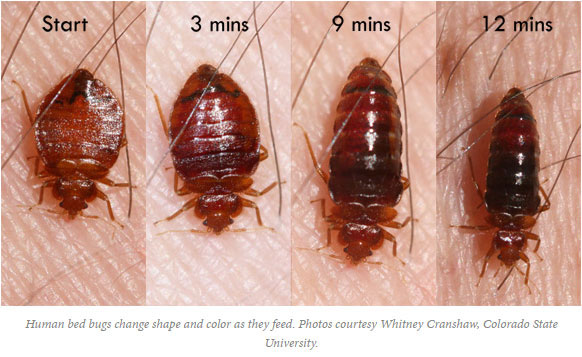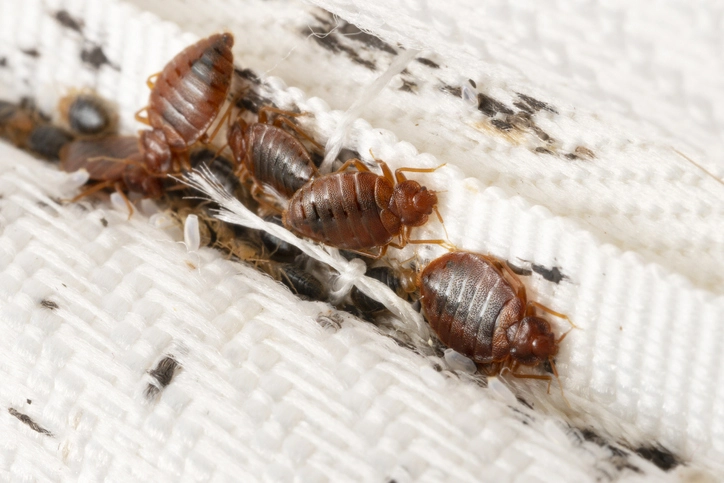A1 Bed Bug Exterminator Houston: Quick Removal Solutions
A1 Bed Bug Exterminator Houston: Quick Removal Solutions
Blog Article
Recognizing the Lifecycle of Parasites for Targeted Control Techniques
Comprehending the lifecycle of pests is a basic element of efficient pest administration strategies. By comprehending the numerous phases of growth that insects undergo, a more exact and targeted technique can be taken on to manage their populations. This understanding not just clarifies the vulnerabilities within the pest lifecycle yet likewise paves the means for implementing critical steps that can disrupt their growth and recreation cycles. With a much deeper understanding of just how pests flourish and advance, customized control approaches can be created to address specific factors in their lifecycle, ultimately bring about even more successful parasite administration outcomes.
Relevance of Understanding Parasite Lifecycle
Understanding the lifecycle of parasites is necessary for developing efficient and targeted control approaches in insect management. By understanding the numerous stages an insect experiences from egg to grownup, pest control experts can recognize weak spots in the lifecycle where treatment can be most effective. Recognizing when larvae are most energetic can help identify the ideal timing for applying larvicides. Furthermore, recognizing the lifespan of an insect types can assist in forecasting population growth patterns and possible problem dangers.
Moreover, acknowledging the certain environmental problems necessary for each phase of the insect's lifecycle can guide choices on habitat alteration or exclusion techniques to disrupt the lifecycle and minimize insect populations. This understanding makes it possible for pest management professionals to apply proactive procedures as opposed to depending solely on reactive treatments, resulting in even more lasting and long-term bug control solutions. Eventually, a complete understanding of parasite lifecycles equips bug control professionals to customize their approaches properly, making the most of and minimizing ecological influences control results.
Key Stages in Parasite Growth
To efficiently apply targeted control techniques in parasite administration, an essential aspect depends on thoroughly recognizing and understanding the vital stages in parasite advancement. Parasite advancement commonly contains numerous essential phases that are vital for their lifecycle and management. The initial stage is the egg phase, where pests lay eggs that later on hatch right into larvae. Larvae then proceed right into pupae, a phase where they undergo transformation before becoming adult parasites. Understanding these phases is vital as it aids in pinpointing weak spots in the lifecycle where control measures can be most efficient.

Susceptabilities in Parasite Lifecycle
Throughout the various stages of a parasite's lifecycle, distinct vulnerabilities emerge visit this site that can be strategically targeted for reliable control procedures. One important susceptability depends on the egg stage, where pests are usually extra at risk to certain pesticides or biological control agents as a result of their soft external shell, making them less complicated targets for intervention. In addition, the larval or nymph stage offers vulnerabilities as bugs undertake rapid development and development, calling for high energy intake that can be exploited by interrupting their food sources or introducing development preventions. Pupal stages, defined by immobility and transformation, provide a home window for targeted control through physical obstacles or particular treatments that prevent successful appearance. Adult insects, while a lot more durable due to their reproductive capacity, can still be susceptible throughout breeding or egg-laying tasks, which can be disrupted through pheromone catches or sterilization methods. Recognizing these susceptabilities in the bug lifecycle is crucial for developing precise and reliable control approaches that properly handle insect populations while reducing environmental impact.
Executing Targeted Control Steps

Applying targeted control measures commonly entails a multi-faceted technique. This may consist of habitat alteration to make the atmosphere less congenial to pests, such as removing standing water for insect control or securing entrance points for rats. Furthermore, organic control techniques can be utilized, where all-natural predators or microorganisms are introduced to maintain bug populations in check.
Chemical control, such as the click reference careful application of chemicals, is one more typical approach. However, it is necessary to make use of these substances deliberately to reduce ecological impact and possible damage to non-target species. Integrated Pest Administration (IPM) approaches that combine different control procedures in a worked with and sustainable manner are typically the most reliable in achieving long-term bug management goals. By implementing targeted control steps based on a thorough understanding of bug lifecycles, bug populations can be properly controlled while lessening risks to human wellness and the environment.
Improved Insect Management Practices

Moreover, the incorporation of organic control representatives, such as natural killers or pathogens of bugs, can help minimize reliance on chemical go to website pesticides and advertise a more well balanced community. Applying physical barriers and catches can additionally become part of boosted insect monitoring practices, supplying non-toxic and targeted options for parasite control. In addition, using scents and various other semiochemicals can interfere with pest mating patterns and communication, bring about decreased pest populations over time.
Final Thought
Finally, comprehending the lifecycle of parasites is important for reliable insect administration strategies. By determining vital stages in bug growth and susceptabilities in their lifecycle, targeted control actions can be applied to reduce insect populations. Improved parasite monitoring practices can help in reducing the dependence on broad-spectrum chemicals and advertise even more lasting and eco pleasant pest control approaches. This expertise plays an essential function in preserving healthy ecological communities and agricultural efficiency.
Understanding the lifecycle of parasites is essential for creating reliable and targeted control methods in insect management. By comprehending the numerous phases an insect goes via from egg to adult, pest control specialists can recognize prone factors in the lifecycle where intervention can be most successful. Ultimately, an extensive understanding of bug lifecycles encourages insect control specialists to tailor their strategies properly, decreasing environmental impacts and making best use of control outcomes.
By implementing targeted control actions based on a thorough understanding of bug lifecycles, pest populations can be successfully regulated while lessening dangers to human health and the atmosphere.
By determining key stages in pest development and vulnerabilities in their lifecycle, targeted control procedures can be applied to minimize pest populations.
Report this page